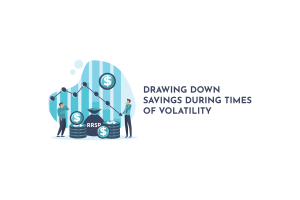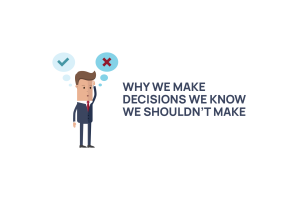Whether it’s real estate, investments, a permanent life insurance policy, or all three, these assets give you the power to access new cash flow streams that can give your long-term financial planning a boost and help ensure sufficient income into retirement. In this article we’re looking at how you can leverage your existing assets to build a secure financial future for yourself and your loved ones.
In This Article:
Taking stock of your assets
Generating cash flow through your existing assets does not necessarily require liquidation. In other words, we’re not here to recommend selling your family home to access cash, nor withdrawing from your investments or life insurance policy, which can deflate your assets’ worth and trigger significant taxation. There are different ways to leverage each asset class to unlock cash flow opportunities as you near or enter retirement.
Generally speaking, your assets—whether it’s a property, an investment portfolio, or a cash value life insurance policy—can be used as collateral to obtain a line of credit. This line of credit gives you access to money without having to compromise your assets. Moreover, the credit can be used at your discretion to accelerate home equity, supplement retirement income, or invest to further grow your wealth. It’s a reliable way to keep your money working for you, as they say, without compromising your quality of life or existing assets.
Let’s take a look at how each asset class can generate cash flow, who this strategy can benefit, and what to know before applying for a secured loan.
Real Estate
If you own your primary residence, it goes without saying that your investment is not exactly liquid. But you don’t have to sell your home in order to access your real estate assets. There are several ways your home equity can be used to pursue financial goals, including a second mortgage, refinancing, or a home equity line of credit (HELOC). For the purposes of this article, we are going to look specifically at HELOC, which is the best option for those seeking to bolster existing financial assets.
What is a HELOC
You can use your home equity as security for a home equity line of credit, aka HELOC. This type of loan enables you to borrow as much as 80% of your property’s appraised value, and readily withdraw cash (as well as make deposits) throughout the draw period. It is also worth noting that during the draw period, you only have to pay interest on the loan; principal payments start once the draw period ends.
Because they are secured, home equity line of credits are typically low-interest. Furthermore, due to their open nature you only have to pay interest on the money you withdraw, not the entire credit amount.
Why take out a line of credit on your home?
There are several reasons a person might look into a home equity line of credit. You can use the money to fund home renovations that increase property value, to supplement retirement income, or to invest strategically. The general idea is that you can keep your real estate assets intact as they continue to increase in value, while still benefiting from a cash flow infusion.
What are the risks of borrowing against your home?
The major risk of using your home equity as collateral for a loan is that you can lose your home if you are unable to make interest (and eventually principal) repayments. HELOC loans are also known to have variable interest rates, meaning that rate increases can happen over the course of your repayment period. If you are unable to meet increased interest payments, the risk of losing your property grows.
Before taking out a loan against your home equity, it’s therefore a good idea to speak with a financial advisor to see if it’s the best option for you and your financial needs.
Investments
Like your home equity, your investment portfolio can be used strategically to generate cash flow. There are several options at your disposal that enable you to access funds without liquidating your investments, including investment loans, RRSP loans, and investment lines of credit (ILOCs). We’ll be zooming in on the latter.
With an ILOC, you can use investments like stocks, segregated funds, or mutual funds to secure a line of credit, which gives you access to capital without cashing your investments and having to pay the corresponding income tax. Moreover, if the loan is used for income generating investments, loan interest is typically tax deductible, mitigating the cost of interest. This strategy also enables you to pay down the loan using your growing investment wealth.
Why use investments as collateral for a line of credit?
There is a key benefit to leveraging your investments for a line of credit rather than liquidating them. Say you have $150,000 in investment capital and are in need of $100,000 for a major home upgrade or a property down payment. Of course, you have the option of withdrawing your investments to cover the costs, however this will cease your investment’s future growth potential and the funds withdrawn are subject to taxation. By leveraging your investment assets to secure a line of credit, however, you can avoid the significant income tax obligation while simultaneously keeping your investment portfolio intact (and growing).
What are the risks of borrowing against your investments?
Like any lending, there are risks involved in investment line of credits. With this type of cash flow generation, the biggest risk comes from market performance. Generally, lenders monitor non-registered investment assets monthly to make sure that there are sufficient funds to secure the loan-to-value ratio (LTV). If the market dips and your investment portfolio value decreases below a certain point, you could be at risk of a margin call. When this happens, you will be required to pay into your collateral fund or repay a portion of the line of credit. This can destabilize your finances and force you to liquidate assets.

Life Insurance
Life insurance is a reliable way to plan for the future and ensure your loved ones are financially taken care of when you are no longer around. Beyond that, certain types of life insurance, such as permanent life insurance, can help to grow your wealth and create a more secure financial future for your retirement and ultimately for your beneficiaries.
If you have a permanent life insurance policy with a cash value component (such as whole life insurance), you have the option to use your policy’s cash surrender value (CSV) as collateral for a loan or line of credit. This comes with tax advantages and ensures that your policy’s cash value continues to rise.
By leveraging your life insurance cash value, it is possible to secure a loan with a value as high as 100% of the CSV. Every year, as the CSV increases, additional loans can be taken out. The funds from the line of credit can be used to invest and accumulate more assets. Why use your policy’s cash value for a line of credit?
While you can choose to withdraw directly from your policy’s cash value, this approach can deplete your policy’s death benefit (thus reducing funds destined for your beneficiaries) or drive up premiums as a consequence. In some cases, the withdrawn funds can also be subject to income tax. Keeping your CSV in place and using it as collateral has the major benefit of avoiding income taxes and keeping your policy’s full death benefit in place. Additionally, you can use money from the line of credit to make non-registered investments as well as other investments like real estate.
What are the risks of borrowing against your life insurance policy?
The main risk of taking out a line of credit using your life insurance policy’s CSV as collateral is that the loan will ultimately reduce your policy’s death benefit. With this type of borrowing, monthly payments are not always required: interest from the loan is tacked on to the line of credit, which is a plus especially if you are using the funds to supplement retirement income. In the end, the loan balance and interest are covered by the policy’s death benefit. Depending on the size of life insurance policy and the loan, this final repayment can eat into the funds destined for your beneficiaries. Additionally, if your permanent life insurance policy lapses and you have an outstanding balance owed, the line of credit can be subject to taxation.
Make the most of your assets
To learn more about these different asset classes and how they can be leveraged to generate cash flow, get in touch with one of our trusted advisors. We can help find a solution that fits your needs and financial situation.




